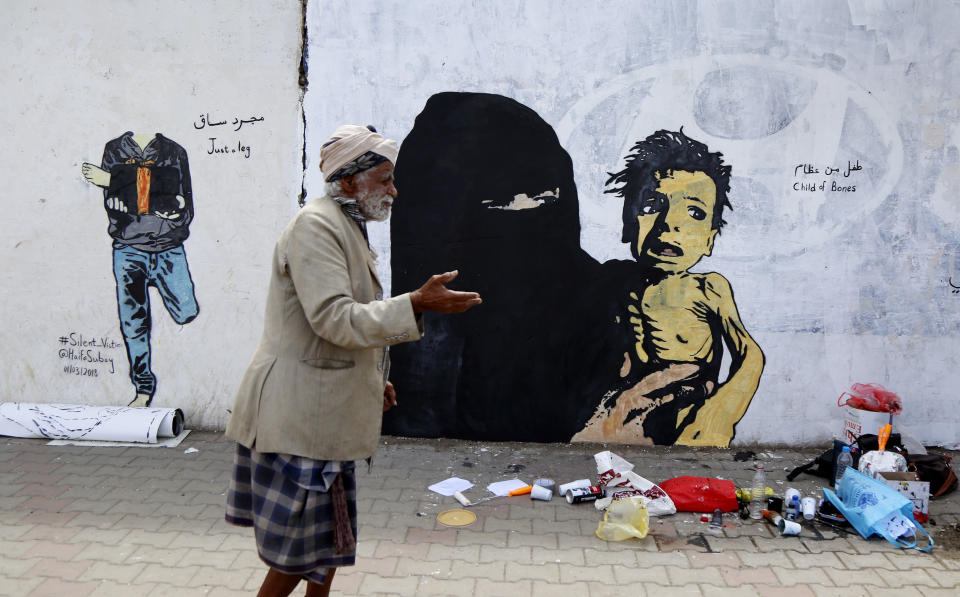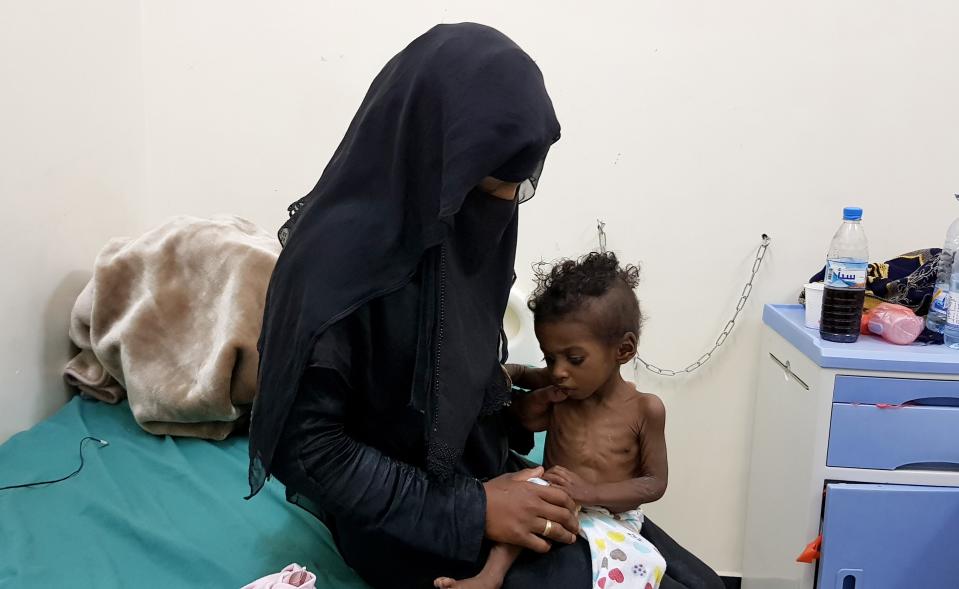The UN has launched its largest appeal EVER to save a country nobody is talking about

It’s a crisis of staggering proportions.
More than 14 million people in Yemen are on the brink of starvation in what could be the worst famine in living memory.
Half the population are in urgent need with 3.2 million requiring treatment for severe malnutrition, including two million children and one million pregnant and lactating women.
A civil war which has ravaged the country over the last 4 years has left about 20 million people across the West Asian country without reliable access to food, at least 17,700 civilians have died and 3.3 million misplaced.
Simply put: “Yemen remains the worst humanitarian crisis in the world,” said UN relief chief, Mark Lowcock.
Now, the UN has launched its largest-ever humanitarian appeal, with a summit in Geneva hoping to raise a record US$4.2 billion (AU$5.9 billion) for the war-torn nation.
It’s the largest appeal ever lodged by the UN for a single nation.
However pledges of US$2.6 billion have fallen far short of the goal, aid agencies have condemned.
Why?
The famine stems from a civil war which has plagued the country for the last 4 years.
The conflict has been centred around the major port city of Hudaydah, and therefore has blocked shipments from coming in.
Despite conflicting forces set to vacate the city, the need for aid is urgent as fighting and famine continues, the UN’s Yemen envoy, Martin Griffiths, told the UN Security council.

“In Yemen today, nearly 1.2 million children continue to live in 31 active conflict zones including Hudaydah, Taizz, Hajjah and Sa’da – in areas witnessing heavy, war-related violence”, said Geert Cappelaere, UNICEF Regional Director for the Middle East and North Africa.
“The impact of the conflict in Yemen runs deep and has not spared a single child”, the official told UN News.
“Mind-boggling violence is tearing apart its social fabric.”
“Mind-boggling violence over the past four years, high levels of poverty, and decades of conflicts, neglect and deprivation, are putting a heavy strain on Yemeni society, tearing apart its social fabric – fundamental for any society and especially for children”.
The United Nations Children’s Fund, UNICEF, is also asking for US$542 million (AU$754.6 million) in aid to ease suffering in Yemen.
How did it come to this?
Most (80 per cent) of Yemen’s imports flow through from the port in Hudaydah. But the fighting has blocked shipments coming in. So to ease the famine, the fighting must stop.
The roots of the conflict are in the 2011 Arab Spring.

During this, longtime authoritarian president Ali Abdullah Saleh was forced to hand over power to his deputy, Abdrabbuh Mansour Hadi.
The transition was supposed to bring political stability to Yemen, but that didn’t happen.
Hadi’s presidency was plagued by attacks by jihadists and a separatist movement in the south as well as food insecurity and corruption.
At the same time, the Houthi movement – which supports Yemen’s Shia Muslim minority – took over the northern Saada province before attempting to take over the entire country. This forced Hadi to flee in 2015 and the conflict escalated.

At this point, Saudi Arabia (a mostly Sunni Arab state) began an air campaign against Yemen to restore Hadi’s government and fight the Houthi forces. Saudi Arabia predicted the conflict would be over within weeks.
This is when the conflict escalated.

Saudi Arabia, and another eight majority-Sunni Arab states received help from the UK, US and France. Saudi Arabia was concerned success by the Houthi forces would give Shia-state, Iran, a foothold in Yemen.
There were also concerns that the Houthi forces were an Iranian proxy. Iran still denies it is, or has been backing Houthi forces.
However, the conflict has continued in the years since then, increasing in scale and devastation.
Since the outbreak of conflict, Yemen’s health system has nearly collapsed with the country beset by a cholera epidemic killing thousands.
Conflicted donors
While countries including the US and Canada, and regions like the EU have pledged millions in aid, Doctors Without Borders has this week raised the alarm over aid donors also fuelling the crisis as warring parties.
In fact, more than half of the US$2.6 billion pledged has been by countries involved in the conflict.
“The United States is a main supporter of the Saudi and Emirati-led Coalition fighting Houthi (Ansar Allah) forces in Yemen. Saudi Arabia and the United Arab Emirates, while primary parties to the conflict, are also among the top donors of aid to Yemen,” the group said on Tuesday.
“Ultimately, Yemen’s humanitarian crisis can only be resolved when donor governments end their involvement in the war and hold the warring parties accountable for their atrocious conduct, endangering the lives of millions.”
Doctors Without Borders said parties to the conflict have “prevented the fair distribution of aid based on humanitarian need”, with restrictions on imports, visas and permits.
At the same time, ongoing fighting also proves to be a stubborn and obvious barrier to the delivery of aid.
“Donor governments pledging funds must work to resolve the obstacles that are preventing aid from reaching the people who need it, and to ensure that the aid delivered responds to the actual needs.”
Make your money work with Yahoo Finance’s daily newsletter. Sign up here and stay on top of the latest money, news and tech news.
Now read: “Systemic exploitation”: The real cost of Australia’s $23 billion fashion industry

 Yahoo Finance
Yahoo Finance 
